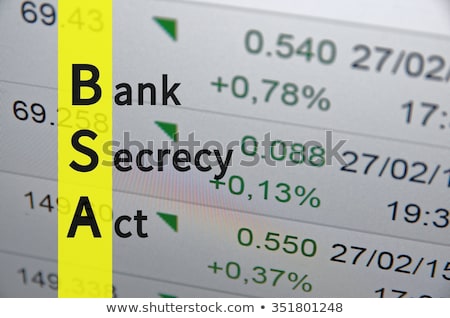Contents:


But then i got a helping hand named Mahendra , who made me retain in this job and till the moment giving me support in my job . I sincerely convey my heart filled thanks and gratitude to Mahendra , the person who made to strong enough to handle the confusion and made me confidently take up my work. Much patience in understanding the customers/students requirement and also understand the levels of skills and build the career for effective use of Tally.ERP 9. He is very good and friendly in teaching and very much particular to the learner’s side to give confidence.
For the https://1investing.in/payer, being a bank, what is of relevance is the Head Office accounts. In the present case, these HO accounts reflect that the recovery by the branches in subsequent years is duly offered to tax by a credit to the P&L. If the recovery is not credited to the P&L, there would be a mismatch between the HO accounts and the branch accounts. In any case, the ITL contains specific provisions to tax such subsequent recovery which sufficiently empowers the Tax Authority to prevent the escapement of income. The deduction is subject to fulfillment of certain conditions.
- If the recipient does not repay the Debt, it also means Bad Debt to the person who provides the loan.
- The Taxpayer had reduced the amount debited to the Profit and Loss Account (P&L) from the Loans and Advances/ Debtors Account (Debtors A/c) on the assets side of the Balance Sheet.
- This estimate also reduces the company’s taxable income, which can affect a lower duty bill.
Always available and can solve the problem on fingertips, He is not doing tally selling business he is just spreading the tally knowledge in a user-friendly manner. I can write more but words or confusing but simply simple broadly helpful. I am Kirana Hiremath , I am Tally trainer and I know how the tally is easy accounting software used… OR single entry is enough because baddebts acc is already in indirect group.
What Are Some Types of Bad Debt?
Received from his Official Receiver a first and final dividend of 60 paise in the rupee on a debt of ₹ 1,000. This, in turn, can enhance the company’s fiscal stability and credibility with suppliers, mates, and guests. By taking a visionary approach and exercising the styles bandied in this blog, companies can recover finances that would otherwise go uncollected. Bad debt is a term used to describe haves owed to a company that is doubtful to be collected.
They will also need to debit the relevant GST account to rectify any previously calculated amount on the invoice. The Debtor’s inability to repay the Debt may be due to bankruptcy of an individual or organization, serious financial problems, or the Debtor’s unwillingness to repay the Debt. In this year’s recruitment cycle, a total of 3539 vacancies were released.
What is the entry for bad debts at the time of dissolution of partnership firm? If bad debts of 5000 incurred.
There are various definitions for Bad Debts to occur which will depend on the type of accounting. The Explanation makes it clear that there is a distinction between a provision and an actual write off. A mere debit to the P&L without a credit entry in individual debtor’s account constitutes a provision. The deduction for such a provision is specifically prohibited by the Explanation.

The Tax Authority disallowed the deduction on the ground that the entry made by the Taxpayer was a mere provision and could not be equated with actual write off of bad debts in terms of the Section. When a bank writes off bad debt, it concludes that the debtor is never going to pay. From a bank’s perspective, a write-off helps in clearing the balance sheet of unwanted liabilities and from a debtor’s perspective, it results in a bad credit history. When a bank does not expect to recover debt it becomes bad and is written off.
Bad Debts Provisions For Doubtful Debts And Discounts On Debtors:
As a result, a customer might end up paying a higher interest. The sum of debt which is due across all your credit cards is bad debt. This implies that cardholders must practice financial self-control by staying within their limits and repaying any obligations on time in order to avoid incurring extra interest or charges.

One of tally nine reader Mr. Mohammad Saleem requested me to write about bad debt and accounting of bad debt in tally. Writing off an irrecoverable debt means taking a customer’s balance in the receivables ledger and transferring it to the profit or loss statement. Then, in the P&L statement, you can add it as an expense because the balance has proved irrecoverable. You must discover the bad debts and attempt to gather them before you write them off. In this method, we can directly written off bad debts, and no involvement of contra-asset A/c i.e. “Allowance for doubtful debt”.
Single Entry System
In general, a bad debt recovered that was previously written off as a loss can be reported as income in the year it is recovered. However, there are certain restrictions on this, and it’s important to consult with a tax professional to determine the appropriate treatment for your situation. Bad Debts of a discontinued business which is already discontinued before the accounting year starts, cannot be claimed as a deduction from the profit of the continued business of the assessee. As per section 36 if bad debts have already been written off in the books of accounts but they are not allowed as a deduction by A.O on the ground that the debt is still having a possibility of recovery.
It is an anticipated loss that a firm bears for quick recovery of amount receivables. We know that bad debt is a loss and is adjusted with the current year’s Profit & Loss A/c. Now, if the amount of bad debt is received in any succeeding year, the same will be credited to Profit and Loss of that year as an income. In simple words, recovery of bad debt is an income and posted to Profit & Loss A/c as profit. Whenever it seems that the customer will not pay the bill, the supplier may credit the value of the invoices towards the bad debt expenditure account.
A Bad Debt Reserve is the valued number of receivables that a company or financial institution does not intend to collect. This includes the business payments that become due and the loan repayments as well. An Allowance for Bad Debt is the valuation account that is used to estimate the amount of a firm’s receivable which may later be ultimately uncollectible. When a borrower defaults on any loan, then the Allowance for the Bad Debt account and the loan which is received is the balance that is both reduced for the book value of the loan amount. The process of strategically estimating the Bad Debt accounts that need to be written off in the future is known as the Bad Debt Provision.
In some cases, a 10-year-old debt may see the creditor attempting to collect the debt. However, banks and lenders usually cannot take legal action on an old debt such as this and may therefore have to write it off. Bad debts are loans or outstanding balances owed by borrowers to lenders. A bad debt is a debt that is unlikely to be collected due to a customer’s inability to pay or other factors.
If an entity realises that it is unlikely to recover that debt from the debtor, it must write off the debt from its books. If credit entry is not made in individual debtor’s account, it is possible that taxpayers may claim double deduction viz. Once by reflecting as a reduction from the assets side in the Balance Sheet and subsequently by crediting the account of the debtor with a corresponding debit, on both occasions to the P&L. Apart from this, writing-off bad loans also has additional benefits. The loan write-off does not take away the bank’s right of recovery from the borrower through legal means.
- In addition to legal proceedings under The Provisional Insolvency Act, 1920, mediation and debt recovery agencies are viable options which can be relied on to recover bad debts.
- It can be a time-consuming and complex process, but the right approach can help companies improve their cash flow and financial stability.
- After doing so, I am now getting accurate financial statements via Tally – with lightning speed and accuracy.
- At the close of the accounting period we find that amounts are receivable from debtors.
- I can write more but words or confusing but simply simple broadly helpful.
With this bad debt recovery entry provider, you can remove bad debt from your financial records as it shows a history of timely payment recovery. You can also protect against non-payment of goods or services using trade credit insurance which covers your company from non-payment of invoices and bad debts. The journal entry for bad debts provision will then have a credit to your receivable account and a deduction to your suspense account. Similarly, reduce the GST in due accounts if you include GST in the initial bill.
For taxpayers engaged in the business of banking or money lending, such a deduction is also allowed for money lent in the ordinary course of banking or money lending business. Solutions for Rs. 1,500 received from Ram which were written off as bad-debts earlier. In English & in Hindi are available as part of our courses for Commerce. Download more important topics, notes, lectures and mock test series for Commerce Exam by signing up for free. The tax treatment of bad debts recovery can vary depending on the type of debt and the methods used to recover it.
Obsolete Inventory Definition – Investopedia
Obsolete Inventory Definition.
Posted: Tue, 30 Mar 2021 07:00:00 GMT [source]
By understanding the definition, tax treatment, and methods of bad debt recovery, companies can effectively reduce the impact of bad debt on their bottom line. It’s important to keep in mind that while recovered debt is often taxed as income, the tax treatment can vary depending on the specific circumstances of the debt and the company. For example, if the debt was previously written off as a business bad debt, the recovery may be treated as a reduction of the previous loss and may not be taxable. It’s also important to consider the tax implications of bad debt recovery. In some cases, a bad debt recovered during the year may be taxed as income, while in others, it may be considered a reduction of a previous loss and may not be taxable.
